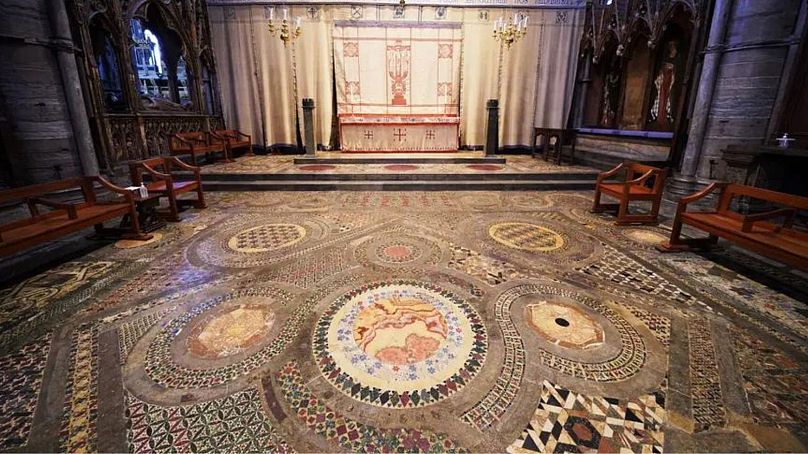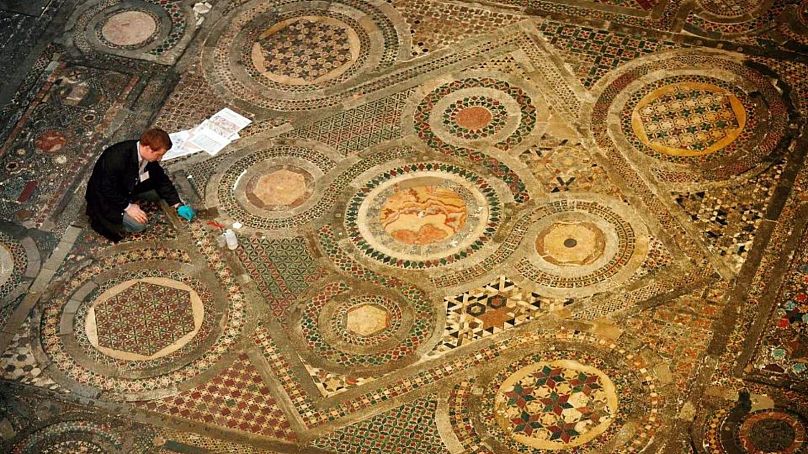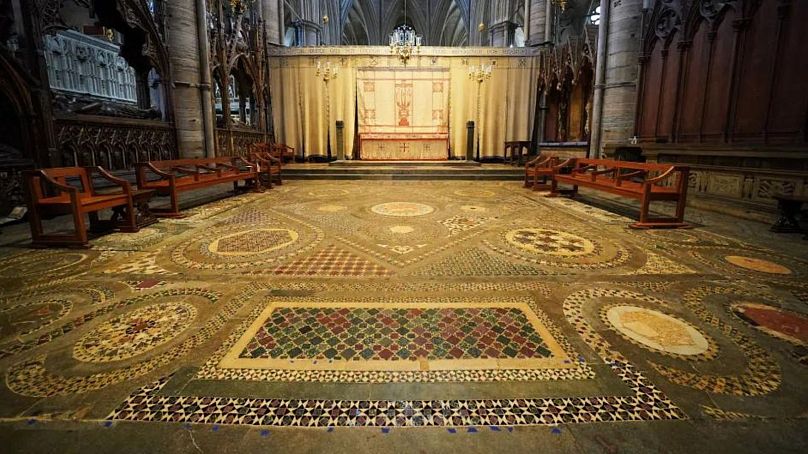The intricate mosaic floor where King Charles III will be crowned on 6 May will be opened to visitors this summer.
Westminster Abbey has announced that following the coronation of King Charles III, the church’s famous Cosmati pavement – an intricate mosaic which lies in the sanctuary in front of the high altar – will be opened up to the public.
It will be the first time in living memory that the abbey has invited visitors to walk on the Cosmati pavement, where the Coronation Chair will be placed.
While many will relish the idea of being able to stand in the same spot as past and current rulers, there is one caveat: people will have to remove their shoes to step on it, in order to protect its surface.
Still, socks beats viewing it from the bottom of the High Altar steps, and medieval coronation rituals often involved rulers going barefoot as a sign of humility. So visitors will be in good company.
What is the Cosmati pavement?
The Cosmati pavement is a 7-metre, 58cm intricate mosaic floor of rare marbles and gemstones, glass and metal.
It was commissioned by Henry III and completed in 1268 as the adornment of his abbey. It is where coronations have taken place for more than 700 years.
During the coronation ritual, the king-to-be would lie on the ground in prayer – an example of how certain floor surfaces were considered of great significance in terms of identity and forging associations between rulers.
Indeed, the flooring’s design reflects more international connections, as it is one of the best examples outside Italy of a rare type of mosaic stonework known as Cosmati, named after the Italian family that created it.
The marble workers from the Cosmati workshops in Rome used precious stones of various colours imported from Italy and beyond. The design features roundels within interlaced circles, which in turn encompass a variety of smaller-scale geometric patterns. It’s essentially a gorgeous (and sacred) jigsaw puzzle.
There is even a riddle on it that adds together the life spans of different animals including dogs, horses, ravens and whales, as well as a cryptic inscription that reportedly predicts the end of the world.
For those of you wondering, it claims it would last 19,683 years.
By the mid-19th century, the pavement was in poor condition and thus hidden away from public view. Extensive conservation work was undertaken between 2008 and 2010 to clean and repair it.
It was covered with special carpet at previous coronations, including that of Elizabeth II in 1953. However, the late Queen was depicted standing on the spot where she was crowned in Australian-born artist Ralph Heimans’ portrait for her Diamond Jubilee in 2012, with the Cosmati pavement in full view.
The Prince and Princess of Wales were married on the Cosmati pavement in 2011 and it will be on display today for his coronation.
The tours of the Abbey and the Cosmati pavement will run on selected days from 15 May to 29 July.














